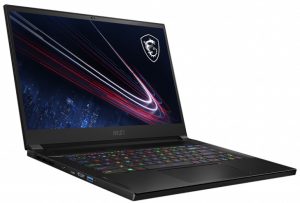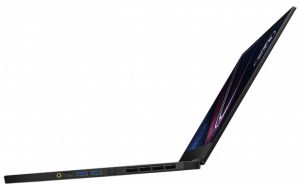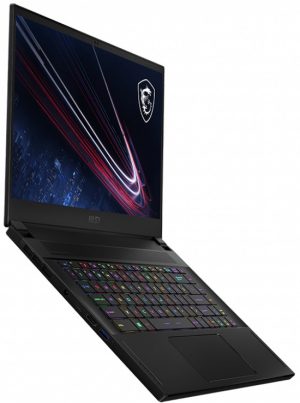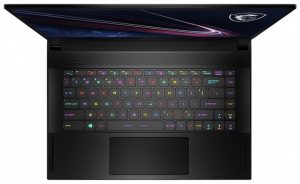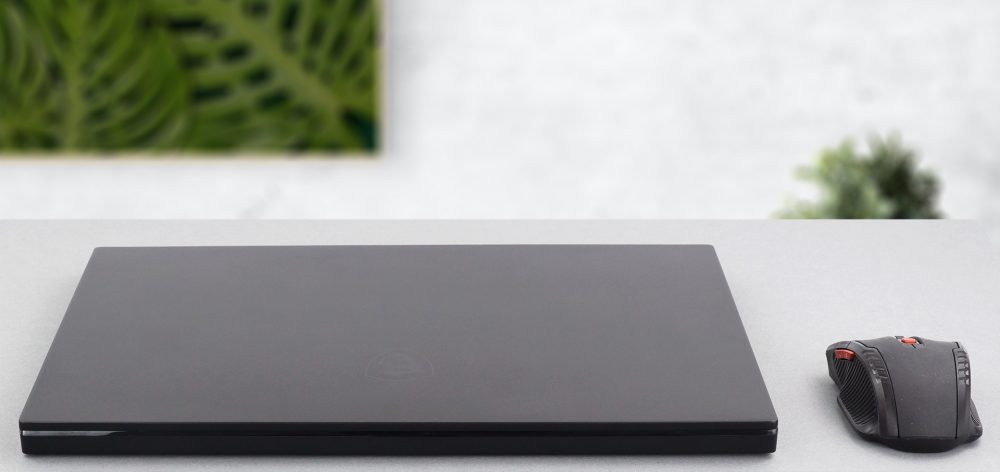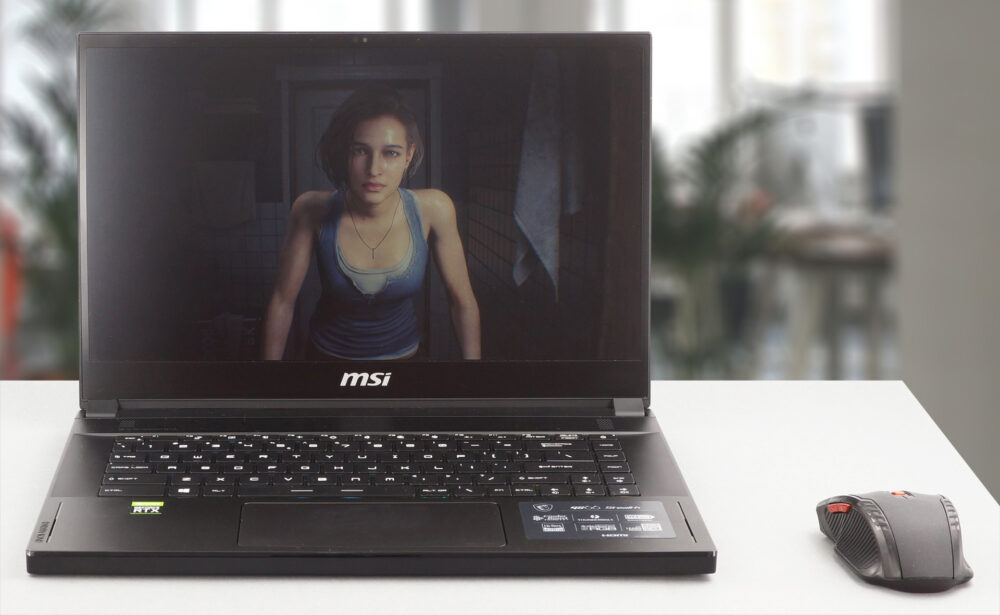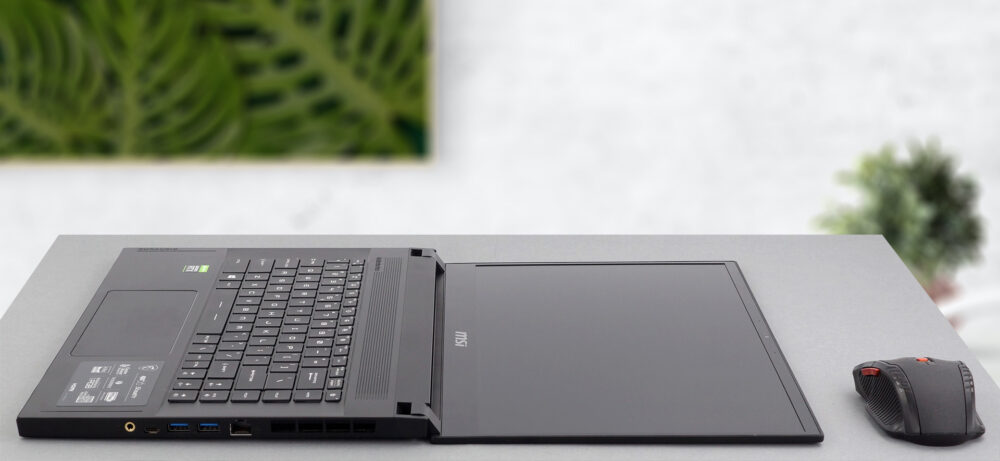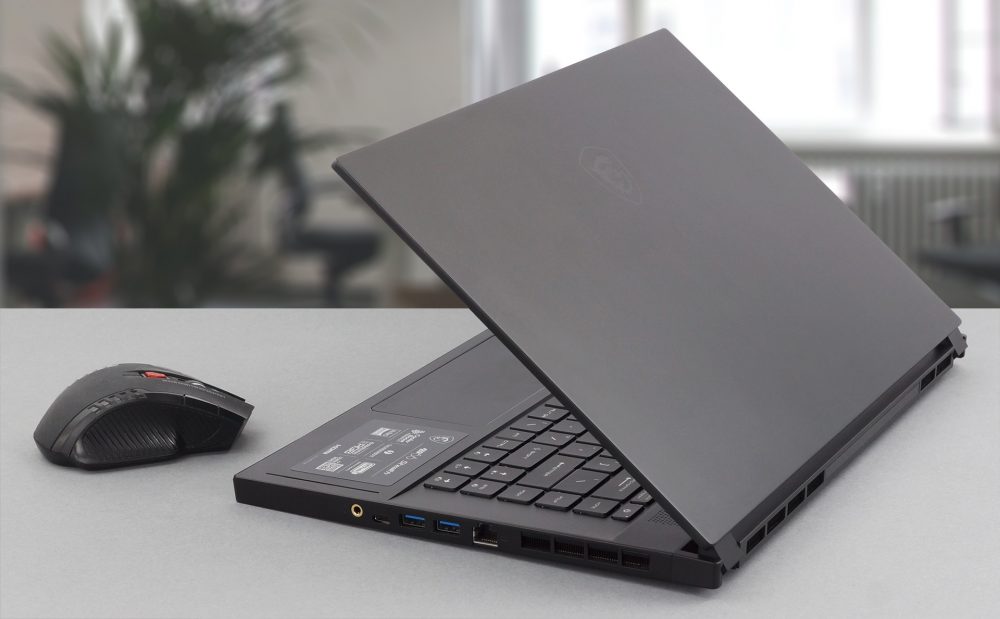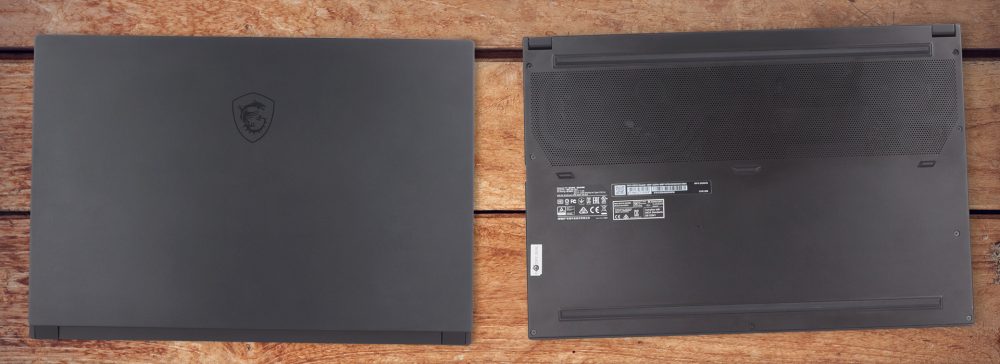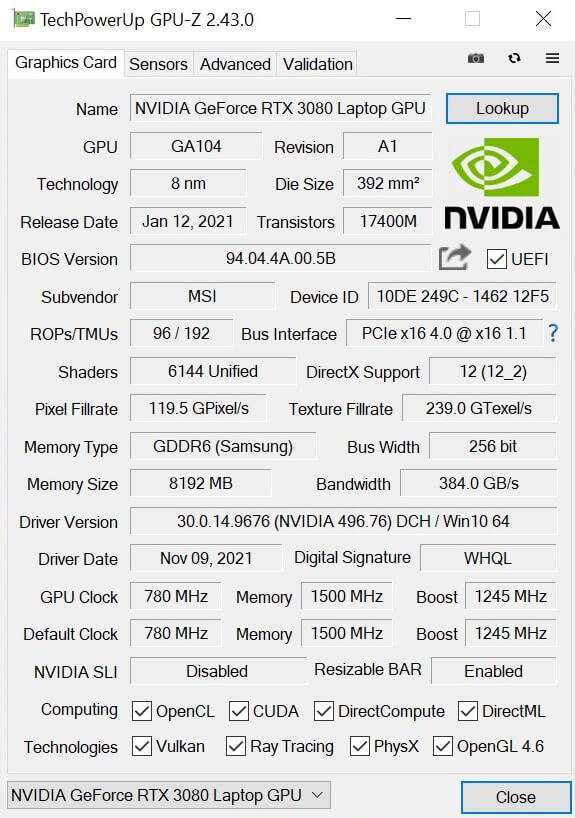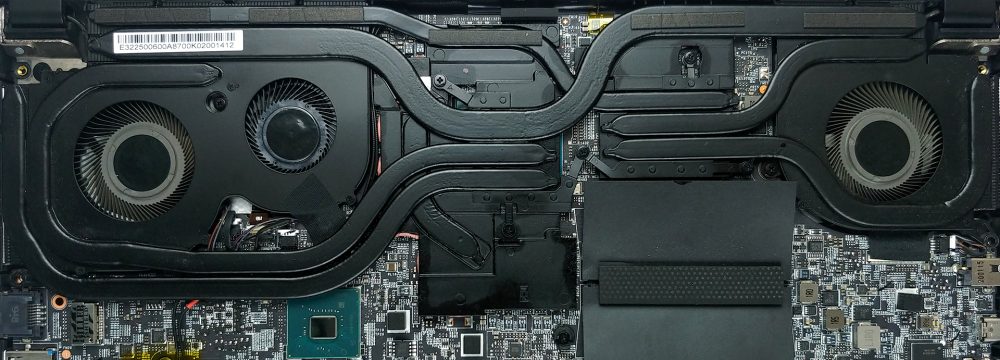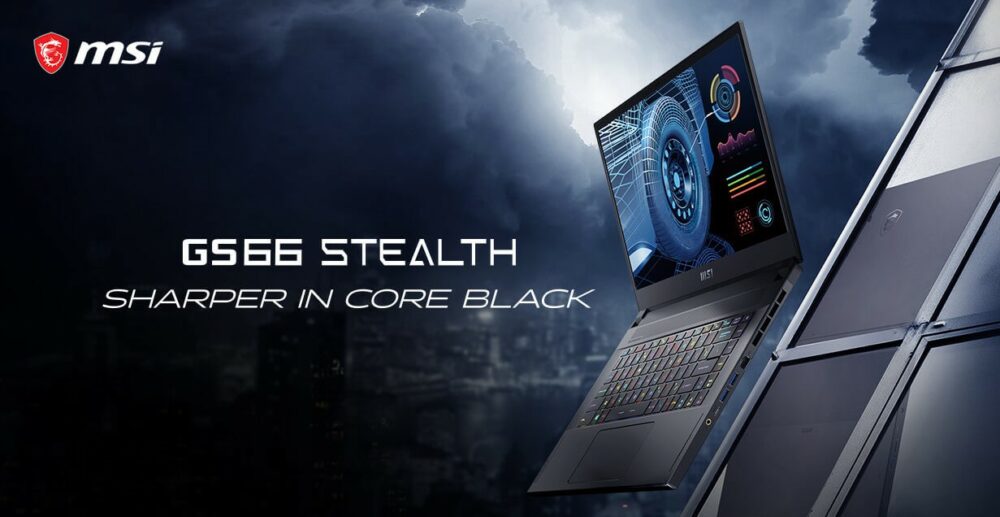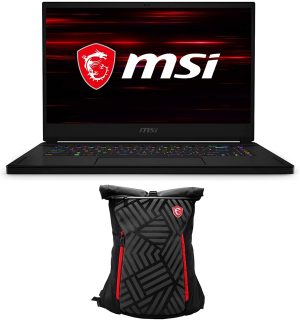MSI GS66 Stealth 11Ux quick review – premium-looking gaming machine that has some flaws
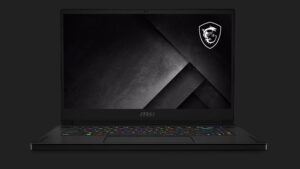 A thin, light and powerful gaming notebook was mission impossible a couple of years ago. Now, thanks to the more efficient CPUs and GPUs, people can buy these kinds of devices. Sure, the market isn’t flooded with such laptops but at least you have some choices to pick from.
A thin, light and powerful gaming notebook was mission impossible a couple of years ago. Now, thanks to the more efficient CPUs and GPUs, people can buy these kinds of devices. Sure, the market isn’t flooded with such laptops but at least you have some choices to pick from.
The updated version of the MSI GS66 Stealth is one of the notebooks that can catch your eye if you’re on a hunt for a thin gaming machine. The new version can be configured with Intel Tiger Lake H45 processors and for the video card variants, we have NVIDIA Ampere GPUs with 95W TGP for all. That’s normal given the fact how thin is this notebook and how powerful the hardware inside of it is. You can’t put a 165W graphics card in a device that has a slim profile like this one – that sounds dangerous.
Just like the previous version of MSI GS66 Stealth, the new device features an all-metal body, slim bezels, a SteelSeries keyboard, and a huge touchpad. The display options look impressive – we’re starting with a 300Hz 1080p panel and if you need an even sharper image, you can get the 4K IPS display.
At least on paper everything sounds great – the device looks neat, it has a good build quality, you can configure it with powerful hardware, the display options include fast refresh rate displays as well as 4K and 1440p variants. Expectedly, the MSI GS66 Stealth comes with a premium price so let’s see if this device can justify its hefty price tag.
You can check the prices and configurations in our Specs System: https://laptopmedia.com/series/msi-gs66-stealth-11ux/
Contents
Specs Sheet
- HDD/SSD
- up to 16000GB SSD
- M.2 Slot
- 1x 2280 M.2 PCIe 4.0 x4 + 1x 2280 M.2 PCIe 3.0 x4 See photo
- RAM
- up to 64GB
- OS
- Windows 11 Home, Windows 10 Pro, Windows 10 Home, Windows 11 Pro, No OS
- Battery
- 99.9Wh, 4-cell
- Body material
- Aluminum
- Dimensions
- 358.3 x 248 x 18.3 ~ 19.8 mm (14.11" x 9.76" x 0.72")
- Weight
- 2.10 kg (4.6 lbs)
- Ports and connectivity
- 3x USB Type-A
- 3.2 Gen 2 (10 Gbps)
- 1x USB Type-C
- 3.2 Gen 2 (10 Gbps), DisplayPort
- 1x USB Type-C
- 3.2 Gen 2 (10 Gbps), Thunderbolt 4, Power Delivery (PD), DisplayPort
- HDMI
- 2.1 (4K@120Hz, 8K@60Hz)
- Ethernet LAN
- Killer E3100 Ethernet
- Wi-Fi
- 802.11ax
- Bluetooth
- 5.2
- Audio jack
- 1x Mic-in, 1x Headphone-out
- Features
- Fingerprint reader
- optional
- Web camera
- HD
- Backlit keyboard
- Microphone
- Speakers
- 2x 2W, Dynaudio
- Optical drive
All MSI GS66 Stealth (11Ux) configurations
What’s in the box?
Inside the box, you can find a 230Wh power adapter, some manuals, and stickers (oh, yes, and an MSI GS66 Stealth machine).
Design and construction
This device definitely looks neat. It’s not a typical gaming laptop with tons of LEDs that are glowing at the same time everywhere. You can use it for office work if you tune the SteelSeries software to glow in one color-only (the default settings are too colorful and blinking).
The laptop is compact and thin (18.3-19.8 mm), and we really like the fact that it’s made of metal. The notebook stops the scales at 2.10 kg which sounds great for a machine that can house a GeForce RTX 3080.
The lid can be opened with a single hand and the hinges are nicely stiffed. The lid isn’t bendable, it’s a bit bouncy if you push it and release it immediately. The bezels around the display are thin except for the chin. The HD camera has an IR face recognition sensor.
The keyboard is a SteelSeries unit with a Per-Key RGB backlight and it’s one of the most customizable laptop gaming keyboards that we have tested. The travel is e bit short while the feedback is clicky enough. The Arrow keys are full-sized but there isn’t enough free space around them and probably you’ll accidentally press other keys while using them. It’s a gaming machine but we don’t like the absence of a NumberPad. The small speaker cutouts are presented on both sides of the laptop.
The base houses a ventilation grill placed above the keyboard. This enhances the cooling of the laptop but just don’t touch this area during gaming – it’s hot as hell. Sadly, it heated up the bottom part of the display as well.
Look down and you can spot a super-wide touchpad. It has a glass surface, gliding feels great and the unit is very accurate. It is comfortable enough for long hours of usage.
The bottom plate isn’t very interesting – there is one big ventilation grill and rubber feet. There are four vents that are being used for exhausting the hot air – two of them are placed on the back of the laptop and the other two are positioned on each side.
Ports
On the left side of the laptop, we can see a power plug, a Thunderbolt 4 connector, an HDMI connector, and a USB Type-A 3.2 (Gen. 2) port. The other side has an RJ-45 connector, two USB Type-A 3.2 (Gen. 2) ports, a USB Type-C 3.2 (Gen. 2) port, and an audio jack.
Disassembly, upgrade options, and maintenance
If you want to see the internals of the laptop, you have to unscrew 9 Phillips-head screws and after that, you can pop the bottom plate with a plastic pry tool.
The cooling solution is almost the same compared to what we found in the previous model – the MSI GS66 Stealth (10Sx / 10Ux). The cooling looks impressive – three heat pipes are solely dedicated to the CPU, and there are another 3 heat pipes for GPU cooling. The cooling offers four heat sinks, the memory chips, and the VRMs are well-cooled too.
In terms of upgradability, there are two RAM SODIMMs, supporting up to 64GB of DDR4-3200MHz memory. For storage, the device has two M.2 slots with RAID support – one is PCIe Gen3, while the other is PCIe Gen4. Yes, no SATA ports here.
The new MSI GS66 Stealth is equipped with the same huge 99.9 Wh battery that we saw in the previous model. This unit should power the device when it is not plugged in.
Sound
MSI GS66 Stealth’s Dynaudio speakers aren’t very impressive. Although there are no deviations across the entire frequency spectrum, we found it to be a bit muffled.
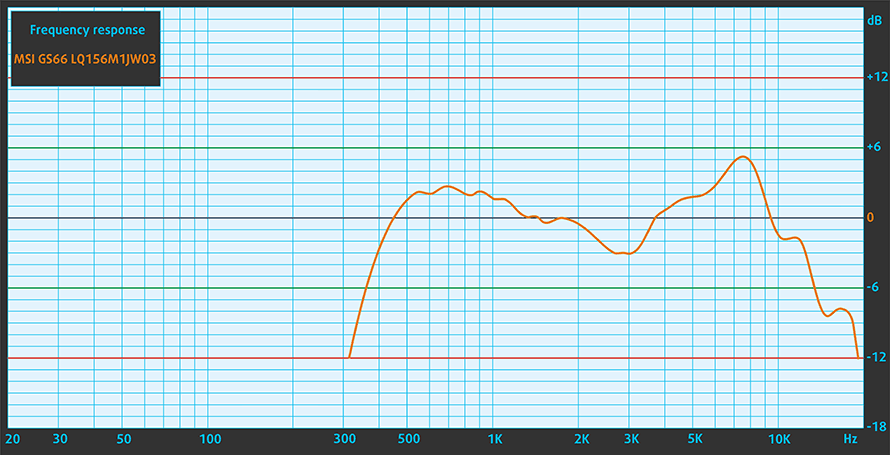
Drivers
All of the drivers and utilities for this notebook can be found here: https://www.msi.com/Laptop/GS66-Stealth-11UX/support
Battery
Now, we conduct the battery tests with Windows Better performance setting turned on, screen brightness adjusted to 120 nits, and all other programs turned off except for the one we are testing the notebook with. The battery life is a disappointment compared to last year’s device. This big 99.9Wh battery lasts 2 hours and 10 minutes of Web browsing, and we got 2 hours and 42 minutes of videos.
In order to simulate real-life conditions, we used our own script for automatic web browsing through over 70 websites.
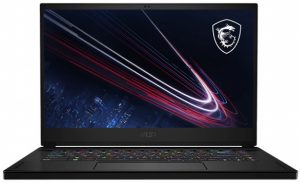
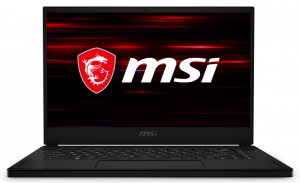
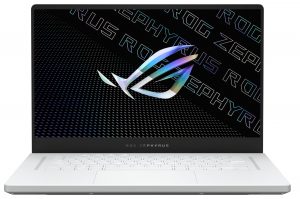

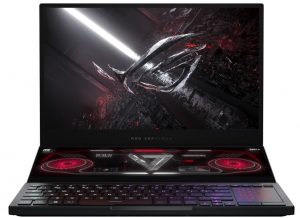
For every test like this, we use the same video in HD.





Storage performance
Our laptop comes with an NVMe drive with a model number Micron_3400_MTFDKBA1T0TFH. The 3DMark storage benchmark measured a bandwidth of 511.6 MB/s which is a good result.
CPU options
The MSI GS66 Stealth can be configured with some of the most powerful Intel Tiger Lake H45 processors including the Core i7-11800H, Core i9-11900H, and Core i9-11980HK.
Results are from the Cinebench 20 CPU test (the higher the score, the better)
Results are from our Photoshop benchmark test (the lower the score, the better)
GPU options
The GPU variants include three possible options with 95W TGPs – GeForce RTX 3060, RTX 3070, and RTX 3080.
Results are from the 3DMark: Time Spy (Graphics) benchmark (higher the score, the better)
Results are from the 3DMark: Fire Strike (Graphics) benchmark (higher the score, the better)
Results are from the Unigine Superposition benchmark (higher the score, the better)
MSI GS66 Stealth (11Ux) GPU variants
Here you can see an approximate comparison between the GPUs that can be found in the MSI GS66 Stealth (11Ux) models on the market. This way you can decide for yourself which MSI GS66 Stealth (11Ux) model is the best bang for your buck.
Note: The chart shows the cheapest different GPU configurations so you should check what the other specifications of these laptops are by clicking on the laptop’s name / GPU.
Results are from the 3DMark: Time Spy (Graphics) benchmark (higher the score, the better)
Results are from the 3DMark: Fire Strike (Graphics) benchmark (higher the score, the better)
Results are from the 3DMark: Wild Life (Graphics) benchmark (higher the score, the better)
Results are from the Unigine Superposition benchmark (higher the score, the better)
Gaming tests (internal display)
| Assassin’s Creed Valhalla | Full HD, Low (Check settings) | Full HD, Medium (Check settings) | Full HD, High (Check settings) | Full HD, Ultra (Check settings) |
|---|---|---|---|---|
| Average FPS | 116 fps | 98 fps | 82 fps | 74 fps |
| Metro Exodus | Full HD, Low (Check settings) | Full HD, High (Check settings) | Full HD, Extreme (Check settings) |
|---|---|---|---|
| Average FPS | 159 fps | 79 fps | 39 fps |
| Gears 5 | Full HD, Low (Check settings) | Full HD, Medium (Check settings) | Full HD, High (Check settings) | Full HD, Ultra (Check settings) |
|---|---|---|---|---|
| Average FPS | 194 fps | 143 fps | 126 fps | 72 fps |
Temperatures and comfort
Max CPU load
In this test we use 100% on the CPU cores, monitoring their frequencies and chip temperature. The first column shows a computer’s reaction to a short load (2-10 seconds), the second column simulates a serious task (between 15 and 30 seconds), and the third column is a good indicator of how good the laptop is for long loads such as video rendering.
Average core frequency (base frequency + X); CPU temp.
| Intel Core i7-11800H (45W TDP) | 0:02 – 0:10 sec | 0:15 – 0:30 sec | 10:00 – 15:00 min | Max Fans |
|---|---|---|---|---|
| MSI GS66 Stealth 11UH | 3.50 GHz (B+52%) @ 95°C @ 84W | 3.09 GHz (B+34%) @ 95°C @ 68W | 2.59 GHz (B+13%) @ 91°C @ 50W | – |
| Dell G15 5511 | 3.67 GHz (B+60%) @ 97°C @ 100W | 3.54 GHz (B+54%) @ 98°C @ 91W | 3.43 GHz (B+49%) @ 93°C @ 79W | – |
| Acer Predator Helios 300 (PH317-55) | 3.67 GHz (B+60%) @ 90°C @ 103W | 3.66 GHz (B+59%) @ 99°C @ 103W | 3.40 GHz (B+48%) @ 99°C @ 84W | – |
| ASUS ROG Zephyrus M16 GU603 | 3.87 GHz (B+68%) @ 95°C @ 106W | 3.90 GHz (B+70%) @ 95°C @ 109W | 3.58 GHz (B+56%) @ 86°C @ 80W | – |
| MSI Creator Z16 (A11Ux) | 3.12 GHz (B+36%) @ 96°C @ 68W | 3.03 GHz (B+32%) @ 95°C @ 62W | 2.76 GHz (B+20%) @ 95°C @ 53W | 2.90 GHz (B+26%) @ 95°C @ 59W |
| MSI GE76 Raider (2021) | 3.22 GHz (B+40%) @ 95°C @ 67W | 3.11 GHz (B+35%) @ 94°C @ 62W | 3.14 GHz (B+37%) @ 94°C @ 61W | 3.26 GHz (B+42%) @ 94°C @ 64W |
| ASUS TUF F15 (FX506, 2021) (Turbo Mode) | 3.98 GHz (B+73%) @ 86°C @ 102W | 3.88 GHz (B+69%) @ 95°C @ 100W | 3.44 GHz (B+50%) @ 87°C @ 77W | – |
| MSI Pulse GL76 | 3.16 GHz (B+37%) @ 95°C @ 65W | 3.00 GHz (B+30%) @ 95°C @ 59W | 2.87 GHz (B+25%) @ 95°C @ 55W | – |
| MSI Pulse GL66 | 2.94 GHz (B+28%) @ 94°C @ 58W | 2.76 GHz (B+20%) @ 94°C @ 52W | 2.77 GHz (B+20%) @ 94°C @ 52W | – |
Despite its impressive-looking cooling, the MSI GS66 Stealth 11UH isn’t a top performer, at least when it comes to CPU cooling and frequencies. In short and medium-long loads, everything is looking normal. That’s until longer stress is applied. In this scenario, the cooling struggles, and the fans are loud. A CPU clock of just 2.59 GHz isn’t something to write home about especially given the price tag of this device. It seems MSI is unsuccessfully trying to tame the Intel Core i7-11800H – only in this configuration, this CPU is working at 50W when it’s stressed and maybe this is one of the possible reasons for the lowered clock during heavy loads. Yes, the thin profile leads to some sacrifices.
Real-life gaming
| NVIDIA GeForce RTX 3080 | GPU frequency/ Core temp (after 2 min) | GPU frequency/ Core temp (after 30 min) | GPU frequency/ Core temp (Turbo mode) |
|---|---|---|---|
| MSI GS66 Stealth 11UH (RTX 3080 95W) | 1316 MHz @ 78°C @ 94W | 1336 MHz @ 82°C @ 94W | – |
| ASUS ROG Zephyrus G15 GA503 (RTX 3080 100W) | 1474 MHz @ 75°C @ 100W | 1475 MHz @ 74°C @ 99W | – |
| GIGABYTE AORUS 15G (RTX 3080 105W) | 1341 MHz @ 82°C @ 103W | 1336 MHz @ 85°C @ 103W | – |
| ASUS ROG Srix SCAR 15 G533 (RTX 3080 130W) | 1616 MHz @ 80°C @ 130W | 1597 MHz @ 82°C @ 130W | |
| ASUS ROG Strix SCAR 17 G733 (RTX 3080 130W) | 1523 MHz @ 81°C @ 129W | 1515 MHz @ 83°C @ 130W |
Actually, the GPU cooling seems okay if we take a look at the result of the GIGABYTE AORUS 15G. This device has a GeForce RTX 3080 105W (10W more compared to the MSI GS66 Stealth 11UH) and under load, the Gigabyte GPU is 3°C hotter than the MSI GS66 Stealth 11UH while the clocks are exactly the same but the GIGABYTE notebook isn’t as thin as the tested MSI laptop. So, in this case, we think that the results are okay for a compact machine.
Gaming comfort
During heavy CPU load, the fans are loud, but when the stress is balanced (like playing games) the noise levels are moderate and comfortable for normal usage even without headphones. Sure, you can hear the fans but they are not producing an intolerably loud noise. Sadly, the upper ventilation grill that is placed above the keyboard is very hot during gaming.
On the other hand, the palm rest area is heating up constantly during gaming – the same applies to the WASD section as well. Nope, these two zones don’t become scoring hot, but when you’re playing a game, you’re going to feel the heat all the time.
Verdict
 At the end of the day, the MSI GS66 Stealth 11UH isn’t as impressive as we thought it should be. Let’s start with the positive things that we saw during the testing. The device looks great, this all-metal build is really stealthy, the whole look is neat and you can use the laptop in the office without drawing too much attention on you.
At the end of the day, the MSI GS66 Stealth 11UH isn’t as impressive as we thought it should be. Let’s start with the positive things that we saw during the testing. The device looks great, this all-metal build is really stealthy, the whole look is neat and you can use the laptop in the office without drawing too much attention on you.
The lid can be opened with a single hand and the bezels around the display are thin. The keyboard deck area is stable during harsh typing and the wide touchpad is a great unit – it has a super-comfortable glass surface and it’s very accurate.
The device can be picked with a decent variety of Intel Tiger Lake H45 CPUs as the Core i7-11800H and Core i9-11900H. All the GPU options have 95W TGPs – the least powerful variant is the GeForce RTX 3060 and the top dog is the GeForce RTX 3080.
Having such a slim body like this one is punishing the hardware during load. We saw that the cooling is struggling to keep high CPU frequencies during load – 2.59 GHz and 91°C isn’t something impressive and actually, this is the worst clock / thermal performance of an Intel Core i7-11800H that we have seen so far. Maybe because of the limited interior space MSI has decided to make some sacrifices.
On the other hand, the thermals of the GeForce RTX 3080 (95W) look just okay. The frequencies are fine for a GPU that has such a limited TGP and the thermals are okay given the thin profile. So, the overall gaming performance seems unharmed because when you play games with maxed-out visuals the CPU isn’t working that hard and at the same time most of the load is transferred to the GPU (which in this case performs normally). In most cases, you’re not going to notice the not-so-well performing CPU in games especially if you get a 1440p or a 4K display option. People who need a device for CPU-heavy productivity tasks should look somewhere else – for example, the ROG Zephyrus G15 GA503 is a pretty formidable choice.
The upgradability options include two M.2 ports and two SODIMMs which seem standard for such an expensive notebook. The I/O is fine with its Thunderbolt 4 port, three USB Type-A 3.2 (Gen. 2) ports, and a USB Type-C 3.2 (Gen. 2) port. For connectivity, we have Wi-Fi 6E, and Bluetooth v5.2 support which is nice. Oops, no SD card reader but maybe most gamers can live without this extra.
 The keyboard left us with mixed feelings. This SteelSeries unit has tons of customization options and the keycaps have a good “click”. However the travel is a bit short, there is no free space around the Arrow keys for normal usage, and the lack of NumPad is a bit disturbing. The comfort during load is a bit questionable. The laptop isn’t too loud when you play a game, but its fans can spin like crazy if you apply some serious CPU-only load. In addition, we’ve seen cooler WASD and palm rest areas during load in much cheaper notebooks.
The keyboard left us with mixed feelings. This SteelSeries unit has tons of customization options and the keycaps have a good “click”. However the travel is a bit short, there is no free space around the Arrow keys for normal usage, and the lack of NumPad is a bit disturbing. The comfort during load is a bit questionable. The laptop isn’t too loud when you play a game, but its fans can spin like crazy if you apply some serious CPU-only load. In addition, we’ve seen cooler WASD and palm rest areas during load in much cheaper notebooks.
The front-firing upper ventilation grill isn’t a bad idea because it helps for better heat dissipation but this area is super-hot when you pound some heavy stress and the bottom side of the display is suffering because of this – the exhausted hot air is heating up this part of the panel. This is not good in the long run for the longevity of the display. Last but not least, battery life is shorter than we expected.
One more thing – we’ve experienced some strange issues with the MSI Center app. When the Cooler Boost is active the laptop is laggy and after some time it completely freezes and the only way to get over it is to force shut down the device. We’ve spotted something else – sometimes when the screen is turned off it can’t be turned back on and again, the force shut down is the way to go.
In short, the MSI GS66 Stealth 11UH isn’t a bad device but it’s too expensive for what it is. It has a premium build, great display options, and powerful CPU and GPU variants. There aren’t too many slim devices on the market that can be configured with high-end hardware like this MSI laptop. The device has its flaws – battery life is disappointing, the keyboard left us with mixed feelings, and the CPU cooling and CPU performance are questionable. Moreover, the device isn’t quiet under load, and the shell temperatures are at the limit for a comfortable experience. Slim and powerful gaming device – this is still a big challenge for all manufacturers.
Pros
- Responsive touchpad, Thunderbolt 4, Wi-Fi 6E, and Bluetooth v5.2 support
- Takes up to 64GB of DDR4 memory and has two M.2 slots
- Up to GeForce RTX 3080 (95W) GPU options
- Powerful hardware inside of a thin, light, and well-built chassis
- IR face recognition system on board
Cons
- Lacks an SD card reader
- The upper ventilation grille is scoring hot when the laptop is under load
- The keyboard is a bit underwhelming, despite its Per-Key RGB backlight
- Disappointing CPU performance and thermal management
You can check the prices and configurations in our Specs System: https://laptopmedia.com/series/msi-gs66-stealth-11ux/

